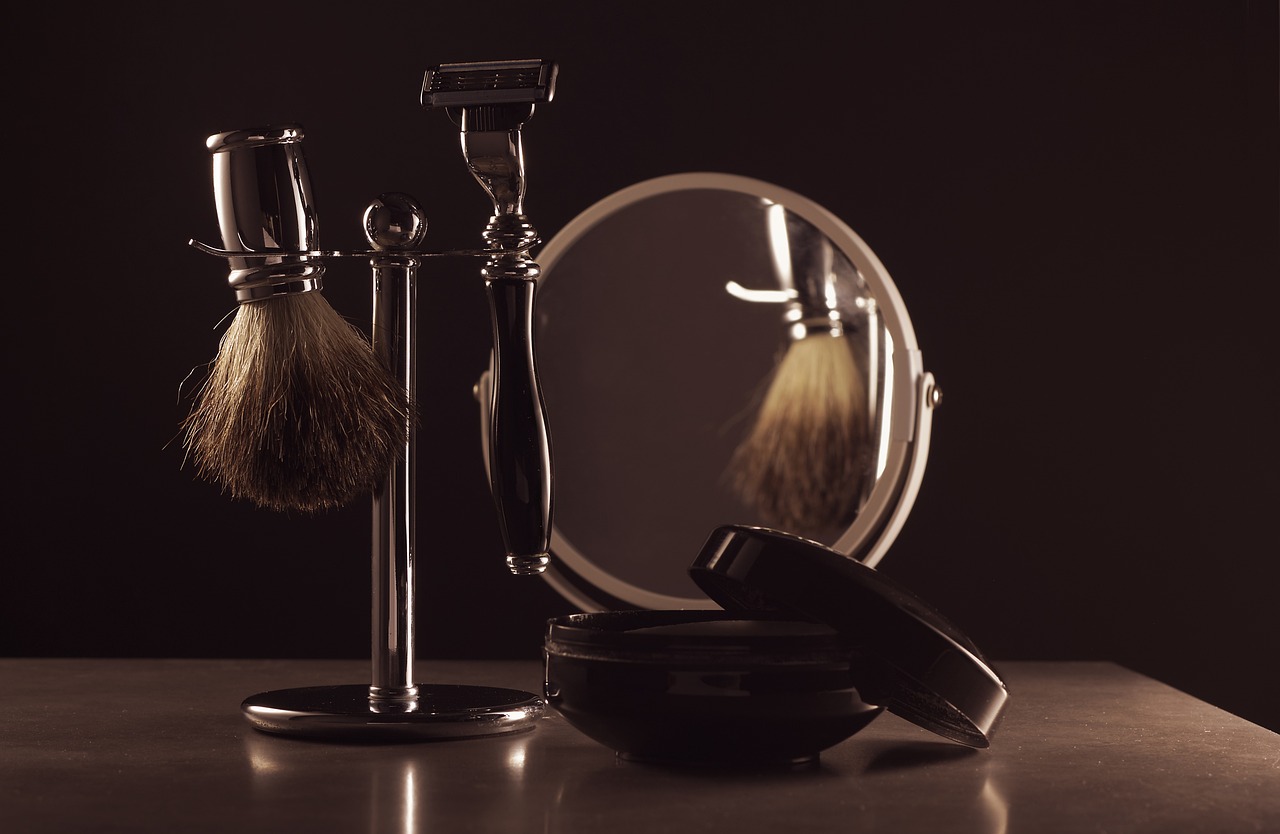Caring for trees after pruning is essential for their health and growth. This involves proper wound treatment, ensuring adequate water supply, and monitoring for pests or diseases. With the right care, pruned trees can thrive and continue to provide beauty and benefits to your landscape.
Pruning is a significant part of tree maintenance. It encourages healthy growth and enhances the tree’s structure. However, the care provided immediately after pruning is equally important. After pruning, trees experience stress. They need support to recover from the trauma of having branches removed. Understanding how to care for your trees during this period can make a substantial difference in their recovery and overall health.

The process of pruning removes not only dead or damaged branches but also living tissue. This can create wounds that need to heal properly. If not cared for correctly, these wounds can become entry points for diseases or pests. Thus, after pruning, it is crucial to implement a care routine that helps the tree recover effectively.
Understanding Tree Pruning
Before diving into post-pruning care, it is essential to understand why trees are pruned. Pruning serves several purposes:
- Removing dead or diseased branches
- Improving air circulation within the canopy
- Enhancing light penetration
- Promoting healthy growth
- Shaping the tree for aesthetic reasons
The timing of pruning also plays a critical role in tree health. Ideally, pruning should be done during the dormant season when trees are less active. This minimizes stress and allows for quicker recovery as the growing season begins.

Post-Pruning Care Essentials
Once the pruning is complete, it is time to focus on post-pruning care. Here are some essential steps to ensure your trees recover well:
1. Wound Treatment
After pruning, it is essential to treat the wounds properly. Here are some key points to consider:
- Do not apply wound dressings or sealants. Research shows that these can trap moisture and promote decay.
- Ensure cuts are clean and smooth. Jagged edges can slow healing.
- Avoid excessive cutting. Only prune what is necessary to minimize stress.
2. Watering
Proper hydration is crucial for trees recovering from pruning. Here are tips on watering:

- Water deeply after pruning to help establish strong roots.
- Monitor soil moisture levels regularly. The top few inches should remain moist but not soggy.
- Avoid overwatering, which can lead to root rot.
3. Fertilization
Fertilizing pruned trees can help them recover faster. However, it must be done correctly:
- Wait a few weeks after pruning before applying fertilizer.
- Use a balanced fertilizer suitable for trees.
- Avoid high nitrogen fertilizers, as they can encourage excessive growth at the expense of root health.
4. Pest and Disease Monitoring
After pruning, trees may be more susceptible to pests and diseases. Regular monitoring can help catch issues early:
- Inspect trees regularly for signs of pests or disease, such as discolored leaves or unusual growths.
- Consider using organic pest control methods if needed.
- Maintain good hygiene around the tree area to prevent the spread of diseases.
Key Factors Influencing Recovery
The recovery of pruned trees can depend on several factors:

| Factor | Description |
|---|---|
| Tree Species | Different species have varied recovery rates and resilience. |
| Time of Year | Pruning during dormancy aids quicker recovery. |
| Weather Conditions | Mild weather promotes healthy growth while extreme conditions can hinder recovery. |
| Soil Quality | Nutrient-rich soil supports better health and growth post-pruning. |
Caring for trees after pruning requires attention and dedication. By following these guidelines, you can ensure that your trees remain healthy and vibrant after undergoing pruning. Proper care will promote growth and maintain the beauty of your landscape for years to come.
Common Mistakes in Tree Care After Pruning
Caring for trees after pruning can be straightforward, but several common mistakes can hinder recovery. Awareness of these pitfalls can help you provide better post-pruning care. Here are some frequent errors to watch out for:
- Ignoring Wound Care: Failing to properly care for cuts can lead to decay and disease.
- Overwatering: Too much water can suffocate roots and promote rot.
- Applying Sealants: Using tree wound dressings can trap moisture and harm the tree.
- Fertilizing Too Soon: Applying fertilizer immediately after pruning can stress the tree.
- Neglecting Pest Control: Not monitoring for pests can allow infestations to take hold.
Signs of Stress in Pruned Trees
After pruning, it is essential to monitor trees for signs of stress. Recognizing these signs early can help mitigate further damage. Here are some common indicators:
- Wilting Leaves: Leaves may droop or curl, indicating a lack of water.
- Discolored Foliage: Yellowing leaves can suggest nutrient deficiencies or stress.
- Excessive Leaf Drop: Losing too many leaves may indicate significant stress.
- Pest Infestations: Look for signs of pests, such as holes in leaves or webs.
- Slow Growth: A lack of new growth during the growing season can be a red flag.
Watering Techniques for Recovery
Proper watering techniques are critical for helping trees recover after pruning. Here are effective methods to ensure your trees receive adequate hydration:
1. Deep Watering
Deep watering encourages roots to grow deeper into the soil, enhancing stability and nutrient access. Follow these steps:
- Use a soaker hose or drip irrigation system to deliver water directly to the root zone.
- Water slowly and deeply, allowing moisture to penetrate the soil at least 12 inches deep.
- Water once a week, adjusting based on rainfall and temperature conditions.
2. Mulching
Applying mulch around the base of the tree can help retain moisture and regulate soil temperature. Consider these tips:
- Use organic mulch, such as wood chips or bark, which decomposes and enriches the soil.
- Avoid piling mulch directly against the trunk to prevent rot.
- Apply a layer of 2-4 inches of mulch around the tree, extending out to the drip line.
Nutritional Needs Post-Pruning
Nutritional support is vital for trees recovering from pruning. Understanding their needs can enhance recovery:
1. Soil Testing
Before applying any fertilizers, conduct a soil test to determine nutrient levels. This helps tailor your fertilization approach effectively. Here’s how to do it:
- Collect soil samples from different areas around the tree.
- Send samples to a local extension service or lab for analysis.
- Follow recommendations based on test results for optimal nutrient balance.
2. Choosing the Right Fertilizer
Selecting an appropriate fertilizer is crucial. Consider these guidelines:
- Opt for slow-release formulations that provide consistent nutrients over time.
- Look for fertilizers with balanced N-P-K ratios (Nitrogen-Phosphorus-Potassium) suitable for your tree species.
- Avoid high-nitrogen fertilizers immediately after pruning to prevent excessive top growth at the expense of root development.
Pest Control Strategies
Pests can pose a significant threat to pruned trees. Implementing effective pest control strategies is essential for healthy recovery:
1. Regular Inspections
Frequent inspections of your trees will help identify pest issues early. Follow these steps:
- Check leaves, branches, and trunk for discoloration or unusual markings.
- Look for signs of insect activity, such as holes or webbing.
- Inspect the ground around the tree for fallen pests or frass (insect droppings).
2. Natural Pest Control Methods
If pests are detected, consider natural control methods before resorting to chemicals:
- Introduce beneficial insects, such as ladybugs or lacewings, which feed on harmful pests.
- Use insecticidal soaps or neem oil as organic treatments.
- Avoid broad-spectrum pesticides that may harm beneficial insects and pollinators.
Caring for your trees after pruning involves a comprehensive approach that includes proper watering, nutritional support, and pest control strategies. By paying attention to these aspects, you can help ensure that your trees recover well and continue to thrive in your landscape.
Seasonal Considerations for Tree Care
Seasonality plays a vital role in the care of pruned trees. Understanding how different seasons affect tree health can guide your care practices effectively. Here are some seasonal considerations to keep in mind:
1. Spring Care
Spring is a critical time for tree recovery following winter dormancy. As temperatures rise, trees begin to grow actively. Here are some essential care tips for spring:
- Inspect for New Growth: Look for budding leaves and new shoots, indicating that the tree is responding well to pruning.
- Water Regularly: As the weather warms, ensure the tree receives adequate moisture, especially if rainfall is scarce.
- Fertilization: If soil tests indicate nutrient needs, apply slow-release fertilizers to support growth.
2. Summer Care
During summer, trees are in full growth mode. Proper care during this season is vital to promote healthy foliage and root systems:
- Monitor for Water Needs: Increase watering frequency during hot spells. Deep watering is essential to encourage deep root growth.
- Pest Monitoring: Keep an eye out for pests that thrive in warm weather. Regular inspections will help catch any infestations early.
- Mulching: Maintain a mulch layer around the base of the tree to retain moisture and regulate soil temperature.
3. Fall Care
As temperatures cool, fall is an opportunity to prepare trees for winter. Here are key actions to take in the fall:
- Reduce Watering: As trees enter dormancy, reduce watering frequency but ensure they receive moisture during dry spells.
- Avoid Late Pruning: Pruning in late fall can stimulate new growth that may not survive winter. Make sure any necessary pruning is done earlier.
- Fertilization: If soil tests indicate, apply fertilizer in early fall to boost nutrient levels before winter.
4. Winter Care
Winter presents unique challenges for tree care, especially for pruned trees. Here’s how to care for your trees during this season:
- Protect from Frost Damage: Use burlap or other protective coverings on young or vulnerable trees to shield them from extreme cold.
- Check Moisture Levels: Ensure that the ground is not completely dry. Water if necessary during dry winter conditions.
- Avoid Snow Load: Remove excess snow from branches to prevent breakage if heavy snow accumulates.
The Importance of Proper Pruning Techniques
The way you prune your trees can significantly affect their recovery and health. Understanding proper pruning techniques is crucial for minimizing stress and promoting growth:
1. Timing of Pruning
The timing of pruning is critical to the health of your trees. Pruning at the right time can help minimize stress and encourage faster healing:
- Dormant Season: Late winter or early spring is often the best time to prune most deciduous trees, as they are still dormant and less likely to suffer from sap loss.
- Avoid Blooming Periods: For flowering trees, avoid pruning during their blooming period to ensure that you do not remove potential flowers.
2. Proper Cutting Techniques
The way cuts are made can also influence how well a tree recovers from pruning:
- Angle Cuts: Make cuts at a slight angle to encourage water runoff and prevent moisture accumulation on the cut surface.
- Use Sharp Tools: Ensure tools are clean and sharp to make clean cuts, minimizing damage to the tree.
- Avoid Topping: Topping trees can lead to multiple issues, including increased susceptibility to pests and diseases. Always prune selectively.
Understanding Tree Growth Patterns
A good understanding of tree growth patterns can help you make informed decisions about care after pruning. Here are key aspects of tree growth to consider:
1. Growth Phases
Trees typically go through several growth phases:
- Juvenile Phase: Young trees focus on establishing roots and developing a sturdy trunk. Care should be taken not to prune too heavily during this phase.
- Mature Phase: Mature trees will have a well-established structure and can benefit from regular pruning to maintain health and shape.
- Decline Phase: Older trees may require special attention as they can become more susceptible to diseases and pests.
2. Response to Pruning
Trees respond differently to pruning based on species and environmental factors:
- Suckering: Some species may produce numerous new shoots after pruning, which can be beneficial or detrimental depending on the situation.
- Crown Thinning: Proper thinning can improve air circulation and light penetration, promoting healthier growth.
By understanding seasonal care needs, proper pruning techniques, and tree growth patterns, you can enhance your approach to caring for trees after pruning. This holistic view will help ensure their long-term health and vitality in your landscape.
Additional Considerations for Tree Health
In addition to the previously discussed practices for caring for trees after pruning, there are a few more considerations that can enhance the health and longevity of your trees. These factors can significantly impact the effectiveness of your tree care efforts.
1. Soil Health
The health of the soil surrounding your trees plays a crucial role in their recovery and growth. Here are some ways to maintain and improve soil health:
- Soil Aeration: Aerating the soil can improve water and nutrient absorption. It helps to alleviate compaction, especially in areas with heavy foot traffic.
- Add Organic Matter: Incorporating compost or well-rotted manure into the soil can enhance its nutrient content and improve its structure.
- pH Level Testing: Conduct periodic tests to ensure that the soil pH is within the optimal range for your specific tree species.
2. Seasonal Mulching
Mulching not only helps with moisture retention but also contributes to overall soil health. Consider the following points when mulching:
- Types of Mulch: Organic mulches, such as wood chips, straw, or shredded leaves, break down over time and enrich the soil.
- Depth of Mulch: Apply a layer of 2-4 inches, but keep it away from the trunk to prevent rot.
- Replenishing Mulch: Regularly check and replenish the mulch layer as it decomposes to maintain its effectiveness.
3. Tree Species Knowledge
Understanding the specific needs of different tree species can help tailor your care efforts. Here are a few tips:
- Growth Habits: Research the growth patterns and specific requirements of your trees to provide optimal care.
- Disease Resistance: Some species are more susceptible to certain pests or diseases. Knowing these vulnerabilities can help in monitoring and prevention strategies.
- Local Adaptation: Choose tree species that are well-adapted to your local climate and soil conditions for better growth and resilience.
Final Thoughts
Caring for trees after pruning is a critical aspect of maintaining their health and ensuring their continued growth. Each step, from proper watering and fertilization to monitoring for pests and understanding seasonal care needs, contributes to the tree’s recovery process. By avoiding common mistakes, implementing effective watering techniques, and providing proper nutrition, you can support your trees in thriving environments.
Additionally, enhancing soil health, applying seasonal mulching, and understanding the specific needs of different tree species can significantly affect their vitality. Trees play an essential role in our ecosystems, providing shade, improving air quality, and contributing to overall biodiversity. Taking the time to care for them properly will yield benefits for years to come.
In conclusion, approaching tree care with a comprehensive understanding can lead to healthier trees that enhance your landscape. With patience and dedication, you can help your trees flourish after pruning and enjoy their beauty for generations.
